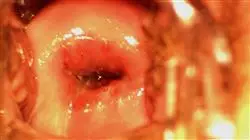University certificate
Scientific endorser
.png)
The world's largest faculty of medicine”
Introduction to the Program
Access the forefront of Gynecological medicine by acquiring the skills that will enable you to lead in a constantly evolving field”

The nature of infertility and gynecologic pathologies requires highly specialized diagnosis, a personalized approach, and detailed management of each patient. The causes and treatments vary significantly from one case to another. At the same time, emotional aspects are fundamental in this process; patients face not only anxiety related to medical treatments, but also stress derived from social pressure and repeated failures.
In this regard, professionals must balance scientific innovations with respect for patients' rights while navigating complex regulatory frameworks that vary by region. All of this, coupled with the pressure to achieve successful outcomes and the psychological impact of treatments, makes the practice extremely demanding but also deeply meaningful. Assisted reproduction has become one of the fastest-growing medical specialties in recent decades, due to the increase in demand for treatments to overcome fertility problems. This academic opportunity focuses on key areas of gynecological care, with a special emphasis on three crucial aspects: the treatment of oncological problems, assisted reproduction, and minimally invasive surgery.
TECH offers a unique educational experience with a scientific, technical, and practical approach that provides all the knowledge necessary to be at the forefront of medicine in this field. With a 100% online approach and methodology, professionals are guaranteed to acquire the essential tools to excel in modern gynecologic surgery. In addition, graduates will have exclusive access to prestigious Masterclasses taught by renowned and internationally renowned directors.
This Advanced master’s degree provides you with the essential knowledge and tools through exclusive Masterclasses, preparing you to successfully face the most complex challenges in gynecological health”
This Advanced master’s degree in Gynecologic Pathology and Assisted Reproduction contains the most complete and up-to-date scientific program on the market. The most important features include:
- The development of practical case studies presented by experts in Gynecologic Pathology and Assisted Reproduction
- The graphic, schematic, and practical contents with which they are created, provide scientific and practical information on the disciplines that are essential for professional practice
- Practical exercises where the self-assessment process can be carried out to improve learning
- Special emphasis on innovative methodologies in Gynecologic Pathology and Assisted Reproduction
- Theoretical lessons, questions to the expert, debate forums on controversial topics, and individual reflection assignments
- Content that is accessible from any fixed or portable device with an Internet connection
Be part of the transformation of the medical sector by learning advanced techniques and innovative approaches at the world’s largest online university”
The teaching staff includes professionals from the field of Gynecologic Pathology and Assisted Reproduction, who bring their work experience to this program, as well as renowned specialists from leading societies and prestigious universities.
The multimedia content, developed with the latest educational technology, will provide the professional with situated and contextual learning, i.e., a simulated environment that will provide an immersive learning experience designed to prepare for real-life situations.
This program is designed around Problem-Based Learning, whereby the student must try to solve the different professional practice situations that arise throughout the program. For this purpose, the professional will be assisted by an innovative interactive video system created by renowned and experienced experts.
TECH offers you the opportunity to learn from experts, providing you with a competitive advantage in the job market”

Through a comprehensive, 100% online methodology, you will be up to date with the latest scientific advances”
Why study at TECH?
TECH is the world’s largest online university. With an impressive catalog of more than 14,000 university programs available in 11 languages, it is positioned as a leader in employability, with a 99% job placement rate. In addition, it relies on an enormous faculty of more than 6,000 professors of the highest international renown.

Study at the world's largest online university and guarantee your professional success. The future starts at TECH”
The world’s best online university according to FORBES
The prestigious Forbes magazine, specialized in business and finance, has highlighted TECH as “the world's best online university” This is what they have recently stated in an article in their digital edition in which they echo the success story of this institution, “thanks to the academic offer it provides, the selection of its teaching staff, and an innovative learning method aimed at educating the professionals of the future”
A revolutionary study method, a cutting-edge faculty and a practical focus: the key to TECH's success.
The most complete study plans on the university scene
TECH offers the most complete study plans on the university scene, with syllabuses that cover fundamental concepts and, at the same time, the main scientific advances in their specific scientific areas. In addition, these programs are continuously being updated to guarantee students the academic vanguard and the most in-demand professional skills. In this way, the university's qualifications provide its graduates with a significant advantage to propel their careers to success.
TECH offers the most comprehensive and intensive study plans on the current university scene.
A world-class teaching staff
TECH's teaching staff is made up of more than 6,000 professors with the highest international recognition. Professors, researchers and top executives of multinational companies, including Isaiah Covington, performance coach of the Boston Celtics; Magda Romanska, principal investigator at Harvard MetaLAB; Ignacio Wistumba, chairman of the department of translational molecular pathology at MD Anderson Cancer Center; and D.W. Pine, creative director of TIME magazine, among others.
Internationally renowned experts, specialized in different branches of Health, Technology, Communication and Business, form part of the TECH faculty.
A unique learning method
TECH is the first university to use Relearning in all its programs. It is the best online learning methodology, accredited with international teaching quality certifications, provided by prestigious educational agencies. In addition, this disruptive educational model is complemented with the “Case Method”, thereby setting up a unique online teaching strategy. Innovative teaching resources are also implemented, including detailed videos, infographics and interactive summaries.
TECH combines Relearning and the Case Method in all its university programs to guarantee excellent theoretical and practical learning, studying whenever and wherever you want.
The world's largest online university
TECH is the world’s largest online university. We are the largest educational institution, with the best and widest online educational catalog, one hundred percent online and covering the vast majority of areas of knowledge. We offer a large selection of our own degrees and accredited online undergraduate and postgraduate degrees. In total, more than 14,000 university degrees, in eleven different languages, make us the largest educational largest in the world.
TECH has the world's most extensive catalog of academic and official programs, available in more than 11 languages.
Google Premier Partner
The American technology giant has awarded TECH the Google Google Premier Partner badge. This award, which is only available to 3% of the world's companies, highlights the efficient, flexible and tailored experience that this university provides to students. The recognition as a Google Premier Partner not only accredits the maximum rigor, performance and investment in TECH's digital infrastructures, but also places this university as one of the world's leading technology companies.
Google has positioned TECH in the top 3% of the world's most important technology companies by awarding it its Google Premier Partner badge.
The official online university of the NBA
TECH is the official online university of the NBA. Thanks to our agreement with the biggest league in basketball, we offer our students exclusive university programs, as well as a wide variety of educational resources focused on the business of the league and other areas of the sports industry. Each program is made up of a uniquely designed syllabus and features exceptional guest hosts: professionals with a distinguished sports background who will offer their expertise on the most relevant topics.
TECH has been selected by the NBA, the world's top basketball league, as its official online university.
The top-rated university by its students
Students have positioned TECH as the world's top-rated university on the main review websites, with a highest rating of 4.9 out of 5, obtained from more than 1,000 reviews. These results consolidate TECH as the benchmark university institution at an international level, reflecting the excellence and positive impact of its educational model.” reflecting the excellence and positive impact of its educational model.”
TECH is the world’s top-rated university by its students.
Leaders in employability
TECH has managed to become the leading university in employability. 99% of its students obtain jobs in the academic field they have studied, within one year of completing any of the university's programs. A similar number achieve immediate career enhancement. All this thanks to a study methodology that bases its effectiveness on the acquisition of practical skills, which are absolutely necessary for professional development.
99% of TECH graduates find a job within a year of completing their studies.
Advanced Master's Degree in Gynecologic Pathology and Assisted Reproduction
Due to the multiple areas of intervention covered by Gynecology, as well as the integration of the latest advances in the sector, the specialization of professionals has become a prevailing condition in recent years. Among the most relevant subspecialties, oncological gynecology and artificial fertilization stand out, two fields that have gained great popularity with the development of new tools and intervention techniques. To address the cancerous diseases that affect the genital area of the female population, as well as the infertility conditions that limit the possibilities of fertilization, at TECH Global University we developed the Advanced Master’s Degree in Gynecologic Pathology and Assisted Reproduction, a program designed to respond to the need for updating gynecologists in the latest methods of prevention, diagnosis and treatment.
Become a specialist at the largest School of Medicine
Our Advanced Master’s Degree will allow you to train you in a comprehensive manner in the areas of gynecologic pathology, minimally invasive surgery and assisted reproduction to safely and effectively care for patients who require your services. Through a complete, sequential and perfectly structured curriculum, you will deepen and acquire concepts on anatomy, physiology, embryology and genetics, as well as the basics of chemotherapy treatment, adverse effects and new therapies available. You will also assist infertile patients in the different phases of reproductive treatments, including the initial assessment, the performance of complementary tests and the choice of the specific procedures necessary depending on the previous findings. This postgraduate course is a unique opportunity to advance in a highly competitive field and stand out through excellence.







